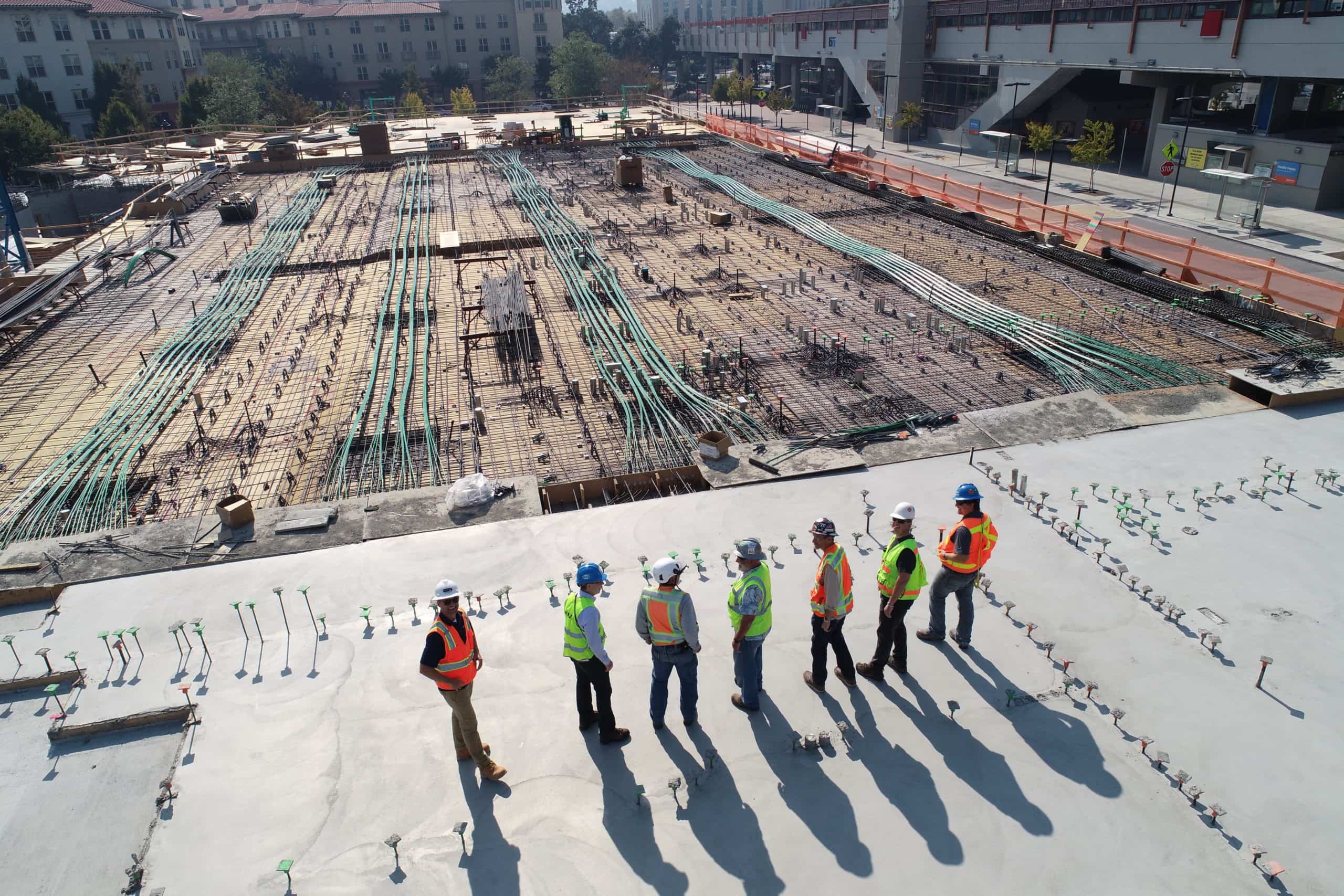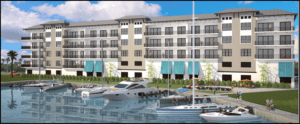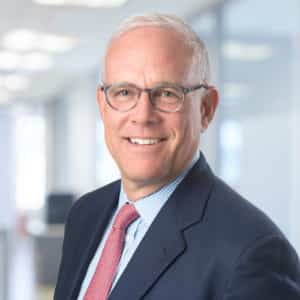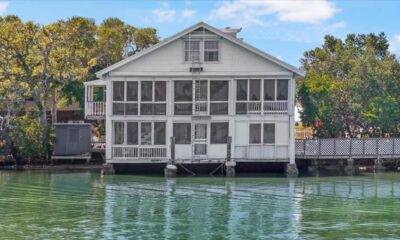Know
Leading real estate lender is bullish on Florida, Tampa-St. Pete

Florida continues to attract new residents who need places to live.
The builders who are constructing single-family homes, condos and apartments need financing for their developments, and Trez Capital is targeting opportunities to underwrite some of those projects.

A rendering of The Harbor at Town Center
Trez Capital, a private real estate lender that does business throughout North America, just funded a $15.6 million construction loan for The Harbor at Town Center, a 38-unit luxury condominium project being developed in Madeira Beach. The units are 66 percent presold.
“It’s well located in a community that has been coming alive in terms of newer projects. The demand is there. We know that because they had a good number of presales with deposits, which gives a lender comfort that these new higher-priced units will sell,” said Brett Forman, Trez Capital executive managing director, eastern U.S.
The project is being developed by William Karns Enterprises.
“We liked the builder, the developer, a salt-of-the-earth person. We just know that he and his family-owned company will put their heart and soul into it and do the right thing. We like to do business with people who are both experienced and financially capable, but you can’t do a good deal with bad people. He’s good people, so that checked all the boxes for us,” Forman said.
Trez Capital has been active in the Tampa-St. Pete area previously. Earlier funding deals include Brandon Town Center in July 2019 and Avalon on Clearwater Beach in October 2019.
The company generally provides short-term debt and equity financing, typically between six months and 36 months in term, ranging from $5 million to more than $100 million in loan value.
The St. Pete Catalyst talked with Forman about current funding trends in real estate.
Catalyst: What type of demand are you seeing for funding?

Brett Forman
Forman: Demand is a based on the asset class. If we’re specifically targeting residential, it’s pretty strong. There’s a lot of migration to the warmer climates, those that are least densely populated and those with the lowest taxes. We’re seeing a lot of migration of people who want jobs or want to retire but move out of the more urban environments, the colder climates and the higher tax places.
Catalyst: What types of projects are most fundable right now?
Forman: Most lenders are favoring single family for rent or multifamily for rent. Single family for sale in the affordable price point is also very hot.
The other area is on industrial. We know retail is changing, the way consumers spend their money, so much more is being done via the web, that industrial has taken off to fulfill demand of internet-based retail.
Catalyst: What about luxury properties? Are you seeing as much demand for them?
Forman: We are but not nearly to the same extent. I would say that high-end condos outside of the vacation areas seem to be coming back a bit and I think that’s in part because the single-family home market is so hot. Land is so expensive and there’s not a lot of supply of the single-family, so what we are seeing is the return of condos.
In Tampa-St. Pete for instance, you are seeing some high-end, beautiful new condo projects that are really being well-received.
Catalyst: Are there types of projects that are questionable for lenders?
Forman: There’s a lot of talk about micro-units, or communal type living, where not everyone has their own bathroom or their own kitchen. I understand that there may be younger people that want to live there. But as a lender, it’s pretty hard for me. I always have to think that if it doesn’t work for the developer, my borrower, what happens. If a communal living operator or a micro-apartment operator can’t make it work, I won’t be able to make it work. That’s a trend but it’s not one we are very active in or want to be active in.
Catalyst: What geographic factors at play in funding decisions? How do Florida and the Tampa-St. Pete area compare to other locations?
Forman: We’re a lender that needs to be opportunistic because we’re not a bank and we might be taking a little more risk and charging a little bit more for it. We’re always looking for what we believe to be the best risk-adjusted return.
We want to be in areas where we believe there are good growth dynamics.
It would be much harder for us to get behind a multifamily project, although we like that asset class, in the Midwest or the Northeast right now.
Florida is one of the fastest-growing states and Tampa is one of the fast-growing and desirable cities within the state. It’s top of our list. We feel that with the demographics coming our way that it helps if there’s a little over-supply or there’s a little bit of a hiccup in the projected rents. It still will be absorbed by the increased demand.
We certainly favor the Southeast and Florida and the bigger cities within them.
Catalyst: What are terms like on deals right now? How much equity do developers need to put into a project?
Forman: We typically are lending to stronger, more experienced and financially-backed developers. For that reason we do most of our lending on a non-recourse basis, which means they don’t have to sign personally for the money.
We typically lend 75 to 80 percent of approved cost, which should then in theory be at or below 75 percent of value.
Loan to value is in the eyes of the beholder. You can have the borrower or the developer’s idea of value. You can have the appraiser’s ideas of value. You can have the lender’s idea of value. And everyone is looking through a different lens.
The appraiser is looking in the rear view mirror at other comps and trades.
In the eyes of the developer, they often see the market getting hotter and they’ll get more in rent.
Then the lender has to figure out, do we want to trend rents up. We typically don’t trend rents up. We look and say, what happens if the rents don’t go up but stay right where they are? Then we might have to look at the oncoming supply, and if there’s a lot of supply, we might still feel good it will be absorbed, but with that much supply, might there be concessions? Then we have to look macrotrends, and say what are people going to pay for apartments?
So in theory, it is possible that the borrower or developer’s value and the lender’s value could be very different.
Our loans are usually one to three years. It’s a bridge, a construction loan, and then we expect them to sell the property and refinance and get us out entirely.
Catalyst: What are your long-term views of commercial real estate in Florida and the Tampa-St. Petersburg area? Do you see the demographic trends you are seeing now continuing?
Forman: I’ve always been a believer that Florida will grow. It always has and it always will. Florida used to be known for its booms and its busts, but I think that was largely because there were foreign buyers or people getting bad mortgages, and they could buy, buy, buy and turn around and rent, and when it didn’t work, it didn’t work.
But I think what we’re seeing now is between the age of the general population, the sunny warm climate and more importantly, the Northeast and Midwest states are having to tax so heavily to keep their budgets in balance, and we still have no state income tax. Then if you combine that with a pandemic where people don’t want to be in dense and urban populated areas and take public transit, I think we’ve seen such a boost in our migration, but not only from people who want to retire and be part of the service economy, but people are now bringing true intellectual capital jobs, higher-paying jobs. They are helping make Tampa and Florida as a whole a more acceptable destination, a place to live and raise a family.
When someone on Wall Street hears that their colleagues or friends in the same industry are working from a rental home or apartment and can walk along the beach in January or February, and they save 12 to 13 percent by living here, it makes it very acceptable for others.
And some of the more known companies that are establishing new offices in Florida are also making it more acceptable for other employers to move down.
I do believe that the pandemic and the economic situation has pushed it to an extent where now people will move because they want to be in Florida, and because they believe their employees want to be in Florida. I think we’re going to see more and more of that.
I’ve been here for 15 years and I’ve never felt stronger about the growth prospects of Florida. We always knew it was growing but now it’s growing with high-paying jobs, which will benefit all parts of the economy in Florida.
For Tampa to have just hosted the Super Bowl also brings good light on the city at the right time. It was nice for people to be able to see how well Tampa could accommodate crowds and frankly, the weather doesn’t hurt for the whole world to see the climate. It’s all good right now for Florida.








Judy Tagert
January 5, 2023at9:21 pm
good article.